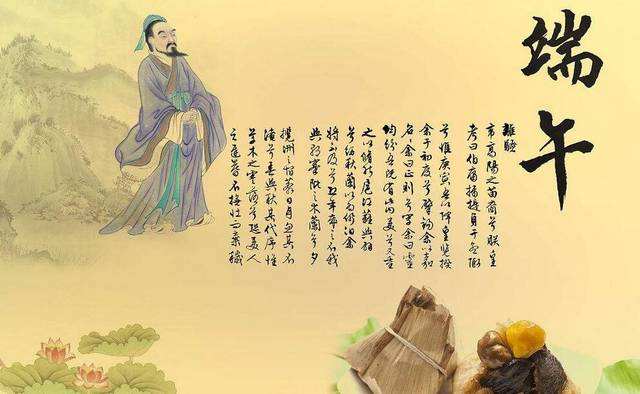Romantic Odes of Chu and Qu Yuan
4 min readThe odes of Chu originated in the state of Chu and prevailed as a new lyric in southern China around the 4th century BC.
The birth of the odes of Chu owed largely to the beautiful landscape, mixed folkways, long history and cultures and unique dialects in the state of Chu. The cultural exchanges between southern and northern China in the period of Spring anAutumn greatly promoted the formation and development of the odes of Chu. Based on this, Qu Yuan integrated the scattered odes and music and injected into them his insightful thoughts, unique ideas, rich political knowledge and excellent art accomplishments, and created a brand-new literary form-the odes of Chu, opening the door of a new epoch in classical odes and poems. Differing from the 4-characterlines in Book of Odes, the odes of Chu displays vivid local characteristics and mythical flavors. Geographically speaking, the odes of Chu originated in the Jiang-Han plain and rooted in the southern China. The use of a sentence pattern more flexible, more suitable for complicated emotions and more special in rhymes and rhythms promoted the development of poetry. Its wild imagination and fantastic romanticism paralleled with the realism in Book of Odes, shining like two gems in the history of poetry and producing far-reaching influences on the development of romanticism in the poetry creation of later generations.

The odes of Chu was mainly contributed by Qu Yuan who created some ever-lasting pieces of Li Sao, Jiu Ge, Jiu Zhang and Tian Wen. Qu Yuan (about 339 BC ~278 BC), given name”Ping”and courtesy name(zi)”Yuan”. In Li Sao, he used the pseudo given name”Zheng Ze”and courtesy name(zi)”Ling Jun”. Qu Yuan was a distant relative ofthe King of Chu and received formal and systematic education when he was young.
He outperformed his peers in politics, history, astronomy, geography, literatur and art. However, his political stand of reforming politics to make his country rich and build up its military might greatly threatened the interest of conservative nobles and was thus framed and exiled twice, which failed his political ambitions.
Finally, feeling desperate about his country’s dark future and his political ideals, he committed a ritual suicide by drowning himself in the Miluo River. Qu Yuan was the first literary man who tried independent writing and the first onymous poet in the history of Chinese poetry. He broke up the tradition of poetry by using many sentences of varying length of five, six, or seven characters instead of the original four-character-line, which diversified the language for poetry and paved the road for literary men in composing five-character or seven-character poems in the late Han dynasty.
Qu Yuan inherited the artistic techniques of expression of bi (explicit comparisons) and xing (implied comparisons). His use of extravagant imagination, fancy exaggeration, metaphors and abundant environmental descriptions has rendered his works a high level of romanticism. He is the starter of ancient Chinese romantic poetry.

Of Qu Yuan’s existing works, the most representative is Li Sao, the longest lyric in ancient Chinese literary history,a masterpiece of romanticism shining through times and also a gem in world literature treasure. It expresses Qu Yuan’s fevered passion to devote himself to his country, his sorrow over his inability to do so and his dignity over the dark society. It uncoveres the full dimensions of contradictions in Chu society, the acute struggle between the progressive and the conservative, the reformers and the obstructionists. Qu Yuan’s great worries over his country and his failure in realizing his political ambitions made Li Sao a poem of tears and blood. Li Sao also expresses Qu Yuan’s political amendment proposition of “safeguarding the king and revitalizing the state”and his loyal love to his state. In the means of artistic expression and creation, Li Sao has very delicate and plentiful description of environment. The employment of fu, bi, xing has combined expression of feelings, narration, argument and description into one, making Li Sao an everlasting and unprecedented masterpiece in the history of Chineseliterature. Li Sao exerted great influence on later generations in language style, sentence structures and means of artistic expression.
Tian Wen is also a poem rare in history and is only shorter than Li Sao in length. In the poem, there are 172 questions regarding astronomy, ying and yang, the four seasons, history, geography, moral ethics, myths and legends. In the whole poem, Qu Yuan meditates on natural and social phenomena, caring about life and exploring truth, reflecting his wide interest and profound knowledge. The stories about history, myths and legends are very valuable to today’s studies in literary history, history and philosophy. However, Jiu Ge is a poem completely different from Li Sao in that it is highly expressive by keeping the characteristics of songs, music and dances and by injecting an interest in human and an understanding on life.
In terms of language style, it has a lot in common with Li Sao in naturalness, simplicity, vividness, colorfulness, deep emotions and connotations. Reading of Jiu Ge will make you feel more desired to read it again and again.

What is worth mentioning is that many talents emerged after Qu Yuan with the most typical representatives being Song Yu, Tang Le and Jing Chai. But only the works of Song Yu are descended to present. In ancient times, people often mentioned “Qu and Song”, which proves that only Song Yu is the real inheritor of the ode of.








